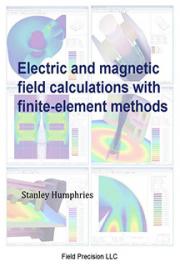Chapter Six
USE OF NEUTROSOPHIC RELATIONAL
EQUATIONS IN CHEMICAL ENGINEERING
This chapter has 2 sections. Section one gives introduction to Neutrosophic Relational Equations (NRE) and section two gives use of NRE in chemical Engineering.
6.1 Introduction to Neutrosophic Relation and their
properties
In this section we introduce the notion of neutrosophic relational equations and fuzzy neutrosophic relational equations and analyze and apply them to real-world problems, which are abundant with the concept of indeterminacy. We also mention that most of the unsupervised data also involve at least to certain degrees the notion of indeterminacy.
Throughout this section by a neutrosophic matrix we mean a matrix whose entries are from the set N = [0, 1] ∪ I and by a fuzzy neutrosophic matrix we mean a matrix whose entries are from N’ = [0, 1] ∪ {n I / n ∈ (0,1]}.
Now we proceed on to define binary neutrosophic relations and binary neutrosophic fuzzy relation.
103
A binary neutrosophic relation RN(x, y) may assign to each element of X two or more elements of Y or the indeterminate I.
Some basic operations on functions such as the inverse and composition are applicable to binary relations as well. Given a neutrosophic relation RN(X, Y) its domain is a neutrosophic set on X ∪ I domain R whose membership function is defined by domR(x) = max R (x, y)
N
y X
∈ ∪I
for each x ∈ X ∪ I.
That is each element of set X ∪ I belongs to the domain of R to the degree equal to the strength of its strongest relation to any member of set Y ∪ I. The degree may be an indeterminate I also. Thus this is one of the marked difference between the binary fuzzy relation and the binary neutrosophic relation. The range of RN(X,Y) is a neutrosophic relation on Y, ran R whose membership is defined by
ran R(y) = max R (x, y)
N
x X
∈
for each y ∈ Y, that is the strength of the strongest relation that each element of Y has to an element of X is equal to the degree of that element’s membership in the range of R or it can be an indeterminate I.
The height of a neutrosophic relation RN(x, y) is a number h(R) or an indeterminate I defined by
hN(R) = max max RN(x, y).
y Y
∈ ∪I x X
∈ ∪I
That is hN(R) is the largest membership grade attained by any pair (x, y) in R or the indeterminate I.
A convenient representation of the neutrosophic binary
relation RN(X, Y) are membership matrices R = [γxy] where γxy
∈ RN(x, y).
Another useful representation of a binary neutrosophic
relation is a neutrosophic sagittal diagram. Each of the sets X, Y
represented by a set of nodes in the diagram, nodes
corresponding to one set are clearly distinguished from nodes representing the other set. Elements of X’ × Y’ with non-zero membership grades in RN(X, Y) are represented in the diagram by lines connecting the respective nodes. These lines are labeled with the values of the membership grades.
104
x1
.5
y1
x
.
2
3
.4
y2
x3
1
.2
y3
x4
.5
y4
x
.7
5
FIGURE: 6.1.1
An example of the neutrosophic sagittal diagram is a binary neutrosophic relation RN(X, Y) together with the membership neutrosophic matrix is given below.
y1 y2 y3 y4
x ⎡ I
0
0
0.5⎤
1 ⎢
⎥
x
0.3 0 0.4
0
2 ⎢
⎥
x ⎢ 1
0
0
0.2⎥
3 ⎢
⎥
x
0
I
0
0
4 ⎢
⎥
x ⎢ 0
0 0.5 0.7⎥
⎣
⎦
5
The inverse of a neutrosophic relation RN(X, Y) = R(x, y) for all x ∈ X and all y ∈ Y. A neutrosophic membership matrix R–1 = [ 1
r− ] representing −1
R
(Y, X) is the transpose of the
yx
N
matrix R for RN(X, Y) which means that the rows of R-1 equal the columns of R and the columns of R-1 equal rows of R.
Clearly (R-1)-1 = R for any binary neutrosophic relation.
Consider any two binary neutrosophic relations PN(X, Y)
and QN(Y, Z) with a common set Y. The standard composition of these relations which is denoted by PN(X, Y) • QN(Y, Z) produces a binary neutrosophic relation RN(X, Z) on X × Z
defined by
105
RN(x, z) = [P • Q]N(x, z) = max min[PN(x, y), QN(x, y)]
y Y
∈
for all x∈ X and all z ∈ Z.
This composition which is based on the standard tN-norm
and tN-co-norm, is often referred to as the max-min
composition. It can be easily verified that even in the case of binary neutrosophic relations
[PN(X, Y) • QN(Y, Z)]-1
=
1
−
−
Q
(Z, Y) •
1
P
(Y, X). [P
N
N
N(X, Y) • QN(Y, Z)] • RN(Z, W)
= PN(X, Y) • [QN(Y, Z) • RN(Z, W)],
that is, the standard (or max-min) composition is associative and its inverse is equal to the reverse composition of the inverse relation. However, the standard composition is not
commutative, because QN(Y, Z) • PN(X, Y) is not well defined when X ≠ Z. Even if X = Z and QN (Y, Z) ° PN (X, Y) are well defined still we can have PN (X, Y) ° Q (Y, Z) ≠ Q (Y, Z) ° P
(X, Y).
Compositions of binary neutrosophic relation can the
performed conveniently in terms of membership matrices of the relations. Let P = [pik], Q = [qkj ] and R = [rij] be membership matrices of binary relations such that R = P ° Q. We write this using matrix notation
[rij] = [pik] o [qkj]
where rij = max min (pik, qkj).
k
A similar operation on two binary relations, which differs from the composition in that it yields triples instead of pairs, is known as the relational join. For neutrosophic relation PN (X, Y) and QN (Y, Z) the relational join P * Q corresponding to the neutrosophic standard max-min composition is a ternary relation RN (X, Y, Z) defined by RN (x, y, z) = [P * Q]N (x, y, z) = min
[PN (x, y), QN (y, z)] for each x ∈ X, y ∈ Y and z ∈ Z.
This is illustrated by the following Figure 6.1.2.
106
x1
.7
x
.1
2
.6
.5
a
α
.2
.3
.5
x
1
.7
3
.8
I
b
.
.2
1
β
2
.
x
8
4
c .
.
1
5
.3
γ
.3
x5
.2
I
d
.1
x6
.1
FIGURE: 6.1.2
In addition to defining a neutrosophic binary relation there exists between two different sets, it is also possible to define neutrosophic binary relation among the elements of a single set X. A neutrosophic binary relation of this type is denoted by RN(X, X) or RN (X2) and is a subset of X × X = X2.
These relations are often referred to as neutrosophic
directed graphs or neutrosophic digraphs. [42]
Neutrosophic binary relations RN (X, X) can be expressed by the same forms as general neutrosophic binary relations.
However they can be conveniently expressed in terms of simple diagrams with the following properties.
I.
Each element of the set X is represented by a single
node in the diagram.
II.
Directed connections between nodes indicate pairs of
elements of X for which the grade of membership in
R is non zero or indeterminate.
III.
Each connection in the diagram is labeled by the
actual membership grade of the corresponding pair in
R or in indeterminacy of the relationship between
those pairs.
The neutrosophic membership matrix and the neutrosophic
sagittal diagram is as follows for any set X = {a, b, c, d, e}.
107
⎡0 I .3 .2 0 ⎤
⎢
⎥
1 0
I
0 .3
⎢
⎥
⎢ I .2 0 0 0 ⎥
⎢
⎥
0 .6 0 .3
⎢
I ⎥
⎢0 0 0 I .2⎥
⎣
⎦
Neutrosophic membership matrix for x is given above and the neutrosophic sagittal diagram is given below.
a
1
a
.2
b
b
.3
.3
c
.2
c
.6
d
.3
d
e
e
.2
Figure: 4.1.3
Neutrosophic diagram or graph is left for the reader as an exercise.
The notion of reflexivity, symmetry and transitivity can be extended for neutrosophic relations RN (X, Y) by defining them in terms of the membership functions or indeterminacy relation.
Thus RN (X, X) is reflexive if and only if RN (x, x) = 1 for all x ∈
X. If this is not the case for some x ∈ X the relation is irreflexive.
A weaker form of reflexivity, if for no x in X; RN(x, x) = 1 then we call the relation to be anti-reflexive referred to as ∈ -
reflexivity, is sometimes defined by requiring that
RN (x, x) ≥ ∈ where 0 < ∈ < 1.
A fuzzy relation is symmetric if and only if
RN (x, y) = RN (y, x) for all x, y, ∈ X.
108
Whenever this relation is not true for some x, y ∈ X the relation is called asymmetric. Furthermore when RN (x, y) > 0 and RN (y, x) > 0 implies that x = y for all x, y ∈ X the relation R is called anti-symmetric.
A fuzzy relation RN (X, X) is transitive (or more specifically max-min transitive) if
RN (x, z) ≥ max min [RN (x, y), RN (y, z)]
y Y
∈
is satisfied for each pair (x, z) ∈ X2. A relation failing to satisfy the above inequality for some members of X is called non-transitive and if RN (x, x) < max min [RN(x, y), RN(y, z)] for all y Y
∈
(x, x) ∈ X2, then the relation is called anti-transitive Given a relation RN(X, X) its transitive closure R NT (x, X) can be analyzed in the following way.
The transitive closure on a crisp relation RN (X, X) is
defined as the relation that is transitive, contains
RN (X, X) < max min [RN (x, y) RN (y, z)]
y Y
∈
for all (x, x) ∈ X2, then the relation is called anti-transitive.
Given a relation RN (x, x) its transitive closure R
(X, X) can
NT
be analyzed in the following way.
The transitive closure on a crisp relation RN (X, X) is
defined as the relation that is transitive, contains RN and has the fewest possible members. For neutrosophic relations the last requirement is generalized such that the elements of transitive closure have the smallest possible membership grades, that still allow the first two requirements to be met.
Given a relation RN (X, X) its transitive closure R
(X, X)
NT
can be determined by a simple algorithm.
Now we proceed on to define the notion of neutrosophic
equivalence relation.
DEFINITION 4.1.1: A crisp neutrosophic relation RN(X, X) that is reflexive, symmetric and transitive is called a neutrosophic 109
equivalence relation. For each element x in X, we can define a crisp neutrosophic set Ax which contains all the elements of X
that are related to x by the neutrosophic equivalence relation.
Formally Ax = [ y | (x, y) ∈ RN (X, X)}. Ax is clearly a subset of X. The element x is itself contained in Ax, due to the reflexivity of R because R is transitive and symmetric each member of Ax is related to all other members of Ax. Further no member of Ax is related to any element of X not included in Ax. This set Ax is clearly referred to as a neutrosophic equivalence class of RN (X, x) with respect to x. The members of each neutrosophic equivalence class can be considered neutrosophic equivalent to each other and only to each other under the relation R.
But here it is pertinent to mention that in some X; (a, b) may not be related at all to be more precise there may be an element a ∈ X which is such that its relation with several or some elements in X \ {a} is an indeterminate. The elements which cannot determine its relation with other elements will be put in as separate set.
A neutrosophic binary relation that is reflexive, symmetric and transitive is known as a neutrosophic equivalence relation.
Now we proceed on to define Neutrosophic intersections
neutrosophic t – norms (tN – norms)
Let A and B be any two neutrosophic sets, the intersection of A and B is specified in general by a neutrosophic binary operation on the set N = [0, 1] ∪ I, that is a function of the form iN: N × N → N.
For each element x of the universal set, this function takes as its argument the pair consisting of the elements membership grades in set A and in set B, and yield the membership grade of the element in the set constituting the intersection of A and B. Thus, (A ∩ B) (x) = iN [A(x), B(x)] for all x ∈ X.
In order for the function iN of this form to qualify as a fuzzy intersection, it must possess appropriate properties, which ensure that neutrosophic sets produced by iN are intuitively 110
acceptable as meaningful fuzzy intersections of any given pair of neutrosophic sets. It turns out that functions known as tN-norms, will be introduced and analyzed in this section. In fact the class of tN- norms is now accepted as equivalent to the class of neutrosophic fuzzy intersection. We will use the terms tN –
norms and neutrosophic intersections inter changeably.
Given a tN – norm, iN and neutrosophic sets A and B we
have to apply:
(A ∩B) (x) = iN [A (x) , B (x)]
for each x ∈ X, to determine the intersection of A and B based upon iN.
However the function iN is totally independent of x, it
depends only on the values A (x) and B(x). Thus we may ignore x and assume that the arguments of iN are arbitrary numbers a, b ∈ [0, 1] ∪ I = N in the following examination of formal properties of tN-norm.
A neutrosophic intersection/ tN-norm iN is a binary operation on the unit interval that satisfies at least the following axioms for all a, b, c, d ∈ N = [0, 1] ∪ I.
1N
iN (a, 1) = a
2N
iN (a, I) = I
3N
b ≤ d implies
iN (a, b) ≤ iN (a, d)
4N
iN (a, b) = iN (b, a)
5N
iN (a, iN(b, d)) = iN (a, b), d).
We call the conditions 1N to 5N as the axiomatic skeleton for neutrosophic intersections / tN – norms. Clearly iN is a continuous function on N \ I and iN (a, a) < a ∀a ∈ N \ I iN ( I I) = I.
If a1 < a2 and b1 < b2 implies iN (a1, b1) < iN (a2, b2). Several properties in this direction can be derived as in case of t-norms.
The following are some examples of tN –norms
111
1.
iN (a, b) = min (a, b)
iN (a, I) = min (a, I) = I will be called as standard neutrosophic intersection.
2. iN (a, b) = ab for a, b ∈ N \ I and iN (a, b) = I for a, b ∈
N where a = I or b = I will be called as the neutrosophic algebraic product.
3. Bounded
neutrosophic
difference.
iN (a, b) = max (0, a + b – 1) for a, b ∈ I
iN (a, I) = I is yet another example of tN – norm.
1. Drastic neutrosophic intersection
2.
⎧a when b =1
⎪b when a =1
⎪⎪I when a =I
iN (a, b) = ⎨
or b = I
⎪⎪ or a =b=I
⎪⎪⎩0 otherwise
As I is an indeterminate adjoined in tN – norms. It is not easy to give then the graphs of neutrosophic intersections. Here also we leave the analysis and study of these tN – norms (i.e.
neutrosophic intersections) to the reader.
The notion of neutrosophic unions closely parallels that of neutrosophic intersections. Like neutrosophic intersection the general neutrosophic union of two neutrosophic sets A and B is specified by a function
µN: N × N → N where N = [0, 1] ∪ I.
The argument of this function is the pair consisting of the membership grade of some element x in the neutrosophic set A and the membership grade of that some element in the
neutrosophic set B, (here by membership grade we mean not only the membership grade in the unit interval [0, 1] but also the indeterminacy of the membership). The function returns the membership grade of the element in the set A ∪ B.
Thus (A ∪ B) (x) = µN [A (x), B(x)] for all x ∈ X.
Properties that a function µN must satisfy to be initiatively 112
acceptable as neutrosophic union are exactly the same as properties of functions that are known. Thus neutrosophic union will be called as neutrosophic t-co-norm; denoted by tN – conorm.
A neutrosophic union / tN – co-norm µN is a binary
operation on the unit interval that satisfies at least the following conditions for all a, b, c, d ∈ N = [0, 1] ∪ I
C1
µN (a, 0) = a
C2
µN (a, I) = I
C3
b ≤ d implies
µN (a, b) ≤ µN (a, d)
C4
µN (a, b) = µN (b, a)
C5
µN (a, µN (b, d))
= µN (µN (a, b), d).
Since the above set of conditions are essentially neutrosophic unions we call it the axiomatic skeleton for neutrosophic unions
/ tN-co-norms. The addition requirements for neutrosophic unions are
i.
µN is a continuous functions on N \ { I}
ii.
µN (a, a) > a.
iii.
a1 < a2 and b1 < b2 implies µN (a1. b1) < µN (a2, b2); a1, a2, b1, b2 ∈ N \ { I}
We give some basic neutrosophic unions.
Let µN : [0, 1] × [0, 1] → [0, 1]
µN (a, b) = max (a, b)
µN (a, I) = I is called as the standard neutrosophic union.
µN (a, b) = a + b – ab and
µN (a, I) = I .
This function will be called as the neutrosophic algebraic sum.
µN (a, b) = min (1, a + b) and µN (a, I) = I 113
will be called as the neutrosophic bounded sum. We define the notion of neutrosophic drastic unions
⎧a when b = 0
⎪b when a = 0
⎪⎪
µ
⎨
=
N (a, b) =
I when a
I
⎪
or b = I
⎪
1
⎪ otherwise.
⎩
Now we proceed on to define the notion of neutrosophic
Aggregation operators. Neutrosophic aggregation operators on neutrosophic sets are operations by which several neutrosophic sets are combined in a desirable way to produce a single neutrosophic set.
Any neutrosophic aggregation operation on n neutrosophic sets (n ≥ 2) is defined by a function hN: Nn → N where N = [0, 1] ∪ I and Nn = N × ...× N
14243 when applied to neutrosophic sets
n −times
A1, A2,…, An defined on X the function hN produces an
aggregate neutrosophic set A by operating on the membership grades of these sets for each x ∈ X (Here also by the term membership grades we mean not only the membership grades from the unit interval [0, 1] but also the indeterminacy I for some x ∈ X are included). Thus
AN (x) = hN (A1 (x), A2 (x),…, An(x))
for each x ∈ X.
6.2 Use of NRE in chemical engineering
The use of FRE for the first line has been used in the study of flow rates in chemical plants. In this study we are only guaranteed of a solution but when we use NRE in study of flow rates in the chemical plants we are also made to understand that certain flow rates are indeterminates depending on the leakage, chemical reactions and the new effect due to chemical reactions which may change due to change in the density/ viscosity of the 114
fluid under study their by changing the flow rates while analyzing as a mathematical model. So in the study of flow rates in chemical plants some indeterminacy are also related with it.
FRE has its own limitation for it cannot involve in its analysis the indeterminacy factor.
We have given analysis in chapter 2 using FRE. Now we







